With the clock gaining momentum on my remaining time in Korea I've decided to try to make the most of it and get out and see a few things. Due to a holiday and a random day off I ended up with an unexpected 4 day weekend in June. On a whim I checked out the cost of flights to Japan and found a ticket that was less than $200! So, I decided to spend a long weekend in Kyoto and Nagoya. It was a whirlwind trip of a roundtrip ride on the shinkansen, shrines, temples, torii and delicious food. Below are a few pictures from the weekend.
1 Comment
If the name Bongamsa sounds familiar it is because last year, on the Buddha's Birthday, I visited this esoteric temple tucked away in the mountains of Gyeongsangbuk-do. The temple is a meditative spot for the Jogye order (akin to Zen Buddhism) and closed to all but the Buddhist monks who train there. However, in honor of the Buddha every year the monks open the temple up to the public on his birthday (a public holiday here in Korea) and it quickly becomes crowded with throngs of ajummas and adjoshis wearing brightly colored hiking gear along with a few families and young couples. It's not a surprise that people flock to the temple on the one day that it is open - not only is it a relatively unique opportunity to explore an otherwise exclusive temple compound but it is also a strikingly beautiful temple with a backdrop of the towering mountains of central Korea. For the visitors who are there as devotees the main temple building which features a large statue of the Buddha is open and occasionally a monk a will be in there chanting the sutras. For the rest of the visitors the temple grounds are open to explore though there are some areas that are still off limit to visitors. As Buddhist temples do on the auspicious day of the Buddha's birthday the temple offers a small meal for visitors - a bowl of simple bibimbap (mixed vegetables, rice and gochujang, a spicy sweet pepper paste) and another bowl of seaweed soup. Below are a few pictures from a morning at the temple ~  For the past year I've been eagerly counting down the time I have left in Korea and in late April it struck me - I only had a few months left. Suddenly I realized there were a few things I still wanted to do while here and so I created a "bucket list" of sorts with the things I want to do before I embark for the journey home. My bucket list isn't all that long - there are fewer than 10 items and I've started checking them off one by one. The top entry on my list was attending the Lotus Lantern Festival in Seoul in mid-May. This annual festival in honor of the Buddha, which I also attended last year, is held the weekend before the Buddha's birthday. I decided that I could easily knock a few items off my list and planned a weekend in Seoul doing a variety of activities. Lotus Lantern Festival The Lotus Lantern Festival, a bright and colorful celebration for the Buddha, is held in a central location of Seoul. Jogyesa, the headquarters for the Jogye order in Korea organizes the parade (which concludes at the temple) as well as other activities which are held on a closed strip of road which passes by the temple. Though it seems the festival has foundations in localized Buddhist traditions the Lotus Festival itself is relatively new only dating back a few years. Hundreds if not thousands of people participate in the parade - Buddhist monks from throughout Korea and the world, women dressed in hanbok (traditional dress), children from local schools and even foreigners. Most of the participants carry some type of lantern though others dance or play instruments. A few of the parade participants gave away their lanterns at the end of the parade and I was fortunate enough to be the recipient of one such lantern (they seemed to have favored children and foreigners). Below are a few photos of Jogyesa and the parade Sanchon Another item high on my bucket list was to enjoy another meal at a Buddhist restaurant. Since Baru, the restaurant across from Jogyesa, didn't have any open tables I walked over to Sanchon which is tucked back from the main road in Insadong. Sanchon is probably the most well known temple restaurant in Seoul, it was started by a former Buddhist monk and in the evenings there is a musical performance. Like Baru the restaurant is vegan and uses a variety of seasonal and fresh vegetables. The style of food of the two restaurants is reflected in their decor - Sanchon offers a more "traditional Korean experience" with large plants, hanging lotus lanterns and traditional items throughout the restaurant. The food follows suit and seemed to be more traditional Korean fare. On the other hand Baru is a more sleek and modern restaurant without any hint of traditional kitsch as is the food - the restaurant focuses on a modern gastronomical experience. Which restaurant a patron might prefer probably depends on the experience he or she is expecting - a modern take on temple food or something more traditional. Personally, I preferred Baru's dishes but I can see how Sanchon's atmosphere would appeal to the a visitor to Korea. Changdeokgung Palace After spending the night at a local hanok (traditional home) I arose early in the morning to visit the nearby Changdeokgung Palace, a former residence of Korean royalty. Seoul has a few different palaces, the most famous being Gyeongbokgung which I visited lasted year. Changdeokgung is best known for its gardens in which seasonal flowers bloom. Below are a few photos I took of the palace. After exploring the palace I headed to an outdoor market that specializes in organic food, most of which is vegan. I was able to enjoy a delicious lentil burger before heading back to the Lotus Lantern festival. The street in front of Jogyesa was closed off and there were a variety of booths on Korean culture and Buddhism both in Korea and other countries. I chatted for a couple of minutes with monks from Sri Lanka and Nepal before being blessed by them before beginning the long journey back to Jeomchon.
I recognize that I can be a bit loquacious and not everyone wants to sit down and read a lengthy description of someone else's vacation - blogs have replaced the boring slideshows to which travelers once subjected their friends and family. So I compiled a selection of photos from my trip - a snapshot from a favorite moment or simply a photo which I think represents some aspect of the country I visited or the trip itself. A few of the photos are repeats from the blog entries but many are candid shots from my trips to the countryside.  It was not by accident that my last stop on my whirlwind south east Asian adventure was Cambodia. I decided to end my trip there for two reasons - 1) I knew my last few days of travel would be the highlight of my trip because I absolutely love Cambodia and 2) since I had already been there once I was going to be able to relax and spend more time visiting a couple of favorite spots as well as a few new ones. Cambodia, a small country nestled between Vietnam, Laos and Thailand is probably best known for the grandeur of Angkor Wat, an architectural marvel, and the heart breaking legacy of the Khmer Rouge, which I saw first hand during my brief stay in Phnom Penh. As with my first visit to Cambodia this trip was woefully too short - how I wish Cambodia had the same lucrative ESL positions as Korea and Japan so I could live in such an intriguing country while also paying down some debt. Since it's unlikely that will ever happen I guess I'll just have to look forward to a return visit sometime in the future. Phnom Penh  Though I had visited Cambodia before my first trip centered around the ruins in and near Siem Reap. I only spent a mere hour or so in Phnom Penh while changing buses. On this trip I decided to visit the small city and so I scheduled 1 1/2 days there. Regretfully this was much too short and the next time I return to Cambodia I will have t o spend a bit longer in the city so I can become more familiar with it. After arriving in Phnom Penh and settling into the hostel my first destination was The Killing Fields, an area outside of the city. The Killing Fields were so named because it was one of the locations where soldiers for the Khmer Rogue killed so-called "enemies of the state" - typically people whose education the government deemed dangerous to its agriculture based society. Below I've posted photos and more information about my visit there. The rest of my time in Phnom Penh was spent walking around, taking a cooking class, observing Khmer memorializing their king who had passed away a few months before and riding in a tuk tuk so I could see different parts of the city. The city itself was dusty and dirty but the people I encountered such as those in the hostel, the cooking instructor and my tuk tuk driver were friendly and warm. The Killing Fields In the mid-1970's the Khmer Rouge, a communist party in Cambodia, took power of the country and tried to force the population into its own skewed concepts of a proletariat paradise - an agricultural society without intellectuals, cities and the arts. The Khmer Rouge emptied the cities and forced people to return to the countryside where they were expected to farm the land and adhere to the strict policies of the controversial government. In an effort to cleanse the population of perceived dangers the Khmer Rogue tried to wipe out intellectuals, people associated with the former government and any foreign governments, immigrants from Vietnam, Thailand and the likes as well religious followers including Buddhist monks and Christians. An estimated 2 million people died during the 4 years the Khmer Rogue were in power which doesn't even take into account the atrocities against women or the children removed from their families never to see them again. There are many killing fields in Cambodia, areas where people were executed and then buried in mass graves. The most famous is near the village of Cheoung Ek outside of Phnom Penh which is where I visited during my most recent trip to Cambodia. The Killing Fields memorial outside of Phnom Penh has a disquieting beauty. From first glance the green landscape, the tall Buddhist stupa, the quiet pond and Cambodia's sunny blue skies give the impression of a local park however instead of the laughter of children one only hears silence except for the occasional murmur of a tour guide explaining the horrific actions that in the not so distant past took place there. Each visitor is given an audio guide to listen to while walking around the memorial. The audio guides are available in a plethora of languages perhaps indicating the diversity of tourists that visit there or maybe because the Cambodia people are desperate for their story to be told in order to prevent the horrors of the Khmer Rogue happening again. The audio guide which leads people through the area details what exactly occurred at the Killing Fields years ago - testimonials from people who had lived through the Khmer Rogue are given. Survivors talk about witnessing executions, women talk about the horrors and shame of being raped and even a former guard speaks about the things he was asked to do or that he saw. During some of my travels I visited sites that are testament to the horror that humans can do to one another. I witnessed the skeletal remains of Jewish prisoners at the concentration camp of Dachau, saw photographs of death and deformities caused by the a-bomb at the Peace Memorial in Hiroshima and met a woman in Vietnam who, as a child, was one of the few survivors of the rape and murder of a dozen women at the hands of soldiers during the Vietnam/American conflict. I had the same emotional and visceral reaction to The Killing Fields as I did to those other locations. However, at The Killing Fields the memories of the terror there literally are coming up out of the ground as it is not uncommon for visitors to come across pieces of human bone along the paths. While the entire memorial is a disheartening ode to the evils of man the sign that was the most disturbing, the place that I suspect most visitors shed a tear was the one pictured below. The tree above was used by soldiers in the Khmer Rogue to beat to death children in order to save bullets. Bracelets were left in memorial of the children. In a spirit house nearby a visitor left a simple origami crane, a symbol of peace in Japan which one can find by the thousands at the Peace Memorial in Hiroshima. And inside that beautiful stupa pictured above? The bones of hundreds of people found buried in the mass graves at the Killing Fields, a tragic reminder of how cruel people can be to one another. Siem Reap  After an emotional albeit too short time in Phnom Penh I woke up early one morning for the long drive to Siem Reap. Compared to the van ride in Thailand this one in Cambodia was positively spacious (it helps when you don't have your backpack on your lap). The van drove along highways and dirt roads and often through small towns giving passengers a glimpse of different sights throughout Cambodia. In the early afternoon, nearly 6 hours after leaving Phnom Penh we pulled into the local stop in Siem Reap and I hopped into a tuk tuk waiting for me and headed to my guesthouse. After a quick meal I headed out to check off a few items on my list of must-dos when I returned to Cambodia. During my four days in Siem Reap I re-visited a few of my favorite temples, spent part of the day in the countryside learning about the life of rural Khmer, enjoyed a dance performance which was based on the ancient dance form of apsara, pampered myself with a couple of spa treatments and visited a silk farm where I learned the exorbitant amount of time and effort it takes to make something as simple as a scarf. Beyond Siem Reap 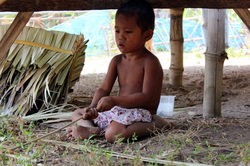 During my first visit to Cambodia I had the opportunity to visit Kompong Khleang, a remote rural village where foreigners are a rarity. I still remember the smiles and shouts of the local children who came out to see my travel partner and me. That experience remains one of my most memorable from all of my travels. On this visit to Siem Reap I was interested in another experience away from the tourist saturated temple ruins. While flipping through a guidebook for the area I happened upon an ad for Beyond. Unique Escapes, a tour company that organizes socially responsible trips. After a brief visit to their office I decided on their country side tour where participants would learn about the lives of the average rural Khmer and take part in some type of volunteer work. The goal of the volunteer work was to assist a type 1 family - a family with no consistent source of income nor without any savings, one which typically struggles to eat daily. Early the next morning I joined 3 other travelers and 2 guides and we drove outside of Siem Reap until all we saw were rice paddies and homes constructed of thatch. When the van finally stopped we hopped out then got into carts pulled by bullocks for a brief tour of the area. Our assigned work for the day was to weave thatched panels for a family home. Homes made of thatch need to be re-done every few years because the building materials begin to deteriorate from the elements. The process can be lengthy - first the leaves must be collected, dried, then soaked in the pond before being dried again in the sun and then family members begin to weave the panels. However, it was slightly more difficult for this family because the mother had recently given birth and she was busy caring for her new born baby. After a brief tutorial we began to weave our panels which proved to be slightly difficult due to the stiff nature of the material and the dullness of the makeshift needle. It was an interesting experience but sadly quite short - we only wove the panels for an hour before a brief tour of the nearby rice paddies while the guide told us more about the daily lives of the local people. After returning to our starting point the guide showed us how to make a couple of local dishes, one of which was a type of steamed salad with red ants as a main ingredient. We sat down in a clearing and enjoyed lunch before bidding farewell to the family we were there to assist and walked back to the central point of the village which had a small temple and school. Altogether it was a good experience and worth the $30 dollar fee (part of the money went to the family as well as a village fund) though I wish we had been able to spend more time helping the family or getting to know them. I realize it was most likely awkward for the women to have strangers at your home who didn't speak your language and were privileged simply because of the countries in which they were born so I understand the limited interactions. However, I do believe we could have woven more panels since the tour ended a few hours earlier than scheduled. The Temples of the Khmer Empire 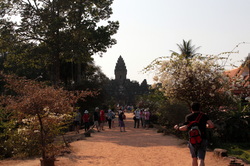 The biggest draw to Cambodia are the plethora of ancient temples which are scattered around the city of Siem Reap. The most famous is Angkor Wat, a temple which is nearly a millennium old and is the largest Hindu temple in the world. However, Angkor Wat is not the only temple in the area worth visiting - Bayon boasts dozens of carved faces of a Khmer king, Banteay Srei delights visitors with its beautiful red sandstone while Ta Prohm highlights the balance between nature and the temples. Upon my return to Siem Reap I decided to visit a selection of my favorite temples - The Roulous Temples, Banteay Srei, Ta Prohm, Bayon and ultimately Angkor Wat. This experience was a bit different from my previous visit - in June of 2009 there were minimal tourists at the sites and I even managed to explore the Roulous temples in solitary. However, February seems to be a popular time for tour groups from far east Asian countries and I had a vastly different experience this time around amongst the hundreds of other tourists all clamoring for the same photo op. I guess an upside of the increased number of tourists is that the hawkers outside the temples concentrated more on the tour groups than the individual travelers so for the most part I could get into and out of the temples without receiving the hard sell to buy some small trinket. Though I had to fight the crowds to see the temples I still marveled at the incredible architecture and detail of the Khmer temples and below are a few photos from my visit.  After a wonderful week in Thailand I boarded a plane for a short flight over to the country of Laos. I didn't know a lot about Laos before I went except that it was supposed to be a beautiful country with a strong Buddhist tradition. My first impressions of the country after I left the airport was that it was much less developed than even the other countries I had visited so far. Laos is a small country in south east Asia which, like its neighbors China and Vietnam, is a communist country. It's most likely the country in which is least familiar with Westerners - Malaysia has Kuala Lumpur, Thailand is well known for its food, Cambodia has Angkor Wat while Vietnam is renown (sadly) for its war. Laos has none of those things and therefore is a bit more low key. This isn't to say it's off the tourist circuit - it is well known amongst back packers in south east Asia and was surprisingly incredibly easy around which to travel. It just means that Laos isn't over developed with Western stores, restaurants, etc and the tourists keep mainly to specific areas which include the historic city of Luang Prabang and the capital, Vientiane. Luang Prabang  My introduction to Laos was through the town of Luang Prabang. Once the capital of the Kingdom of Laos (before it became a communist nation) Luang Prabang is a UNESCO world heritage. Luang Prabang was probably the most enchanting place I visited during my trip. The series of French colonial buildings in the downtown had been converted into restaurants or guest houses. Lazy rivers bordered both sides of the main part of town and locals and tourists strolled along the shaded streets. Flashes of saffron robes were common sights as monks strode between temples. Once you leave town you encounter a countryside which is rich and green and abundant with sprawling farms and natural beauty. While in Luang Prabang I enjoyed an elephant ride through a woodsy area, a boat ride down the Mekong, a cooking class, a walk through a wooded area with a towering waterfall and visits to a variety of temples. However, the highlight of my trip there was a daily ritual performed by Buddhist monks which I'll talk about below. Tak Bat Early one morning in Luang Prabang I climbed out of bed while the night was still dark, showered and quickly dressed before heading out in the dark streets of the town. Though Laos is quite warm throughout the day the mornings are chilly and for the first time since leaving Korea I put on my fleece. While walking to the center of town I encountered groups of tourists also scurrying about alongside locals. Eventually the locals, mostly women, sat down next to the road, unpacking the containers they had with them and began to prepare for a daily ritual. Laos, like most south east Asian countries has a strong Buddhist heritage. Beautiful Buddhist temples and monks clad in their saffron colored robes are a common sight in Laos. The giving of alms is an ancient tradition in south east Asia. Monks leave their temples early in the morning and walk around town during which devotees offer them sticky rice (monks are not supposed to buy food but eat what is provided them by the faithful). I saw this ritual early one morning in Thailand and again in Cambodia. However, unlike those countries where the monks go about in small groups the daily alms ritual in Luang Prabang is a ceremony which involves hundreds of monks. The ceremony begins at dawn when the monks, in meditative silence, begin to file out of the temple and accept the offerings from devotees. The ritual has a series of unspoken rules which are guided by Buddhist beliefs and social norms. Devotees are to sit or kneel while giving alms, which typically consists of sticky rice. Women and men should be dressed respectfully - legs and shoulders should be covered. However, with the influx of tourists these unwritten rules were frequently violated and now many restaurants and guesthouses post them for foreigners. These rules were expanded to request that tourists not take flash photos because it disturbs the monks and if they are not offering alms to stay across the street. Sadly, most foreigners don't heed the rules and while I took photos from afar with my camera and telephoto lens I watched other tourists stand in front of the monks snapping pictures and otherwise creating a spectacle. It was disheartening to see a centuries old tradition ruined because some tourists are too self-absorbed to think of anything else but getting a great photo. From what I've heard and read locals have contemplated ending the tradition because it is no longer a religious ritual but a tourist photo opportunity. The arrogant and ignorant tourists aside it was an interesting ritual to observe. As the monks quietly walk by I realized the sheer quantity of monks in the area (hundreds) and the vast age difference (from 60's-70's to children of 10 or so). I sat across a woman who patiently waited for the monks to arrive and then remained, kneeling, during the entire ritual carefully handing out sticky rice to each monk (many other devotees did not have enough food for all the monks and left before the procession concluded). Not far from this woman sat a young child who sat quietly, his hands pressed together in reverence with a small basket in front of him - a few monks removed rice from their containers and placed it in his basket - it was then that I realized he was there to receive food from the monks and probably was quite poor. Vientiane 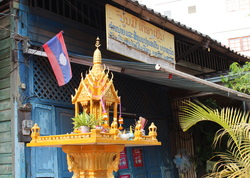 In retrospect the city of Vientiane, Laos' capital and my next stop after Luang Prabang, was a place I could've skipped - or at least only spent a day or so there. Though the capital of the country the city has a very underwhelming rundown feel with little to see or do. Unfortunately I had scheduled 5 days there because I hoped to do use it as a base for a tour in the surrounding area. However, while walking around I realized that unlike Luang Prabang there aren't many tours from Vientiane. I realized by the end of the first day that 5 days in Vientiane would be a waste but as luck would have it I woke up the next morning feeling quite sick - a high fever, muscle aches and chills and so I spent a day and a half in bed resting.The remaining time in Vientiane was spent trying to find something to do until my flight to Cambodia a few days later. This is the downside of planning a trip ahead of time with plane tickets and hotel rooms paid before hand. However, it's how I prefer to travel when out and about by myself so I don't really regret the decision. The lack of things to do was also partially my own fault because I didn't completely read up on the city in my guidebook and I missed the opportunity to visit a silk farm where disadvantaged women are taught how to weave silk.
Throughout my few days in Vientiante I spent my time wandering around the town, enjoying a variety of food (though small it does have a decent number of international restaurants), peeking into different temples and trying to avoid the rain. Though at times I feel like I wasted too much time there I do think that with less to do I was able to recharge myself a bit before the whirlwind final week of my trip. 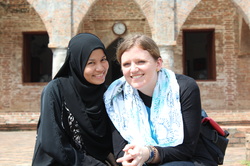 My Malaysian adventure ended with a short flight from Kuala Lumpur to the southern Thai city of Hat Yai. Thailand is a country which I doubt I need to really introduce - it's probably the most well known country in south east Asia because of its incredibly popular food, beautiful architecture and friendly people. Once the plane I was on touched down I began the surprisingly easy journey from there to the town of Pattani. I had expected this portion of my trip to be a bit more difficult since this part of southern Thailand isn't exactly known for being a tourist destination and therefore fewer people speak English. However, my friends had given me wonderful advice and I easily transitioned from the airport to the bus station via taxi and from there in a van full of university students to Pattani where I traveled to for a mini reunion with fellow BSU students. I split my time in Thailand between Pattani in the south and Chiang Mai in the north - this permitted me to see two distinctly different aspects of Thai culture - the Malay Muslim influenced culture of the south and the Buddhist centered culture of the north. Pattani  Approximately 2 1/2 years ago I met a trio of Thai students through my job at the Rinker Center for International Programs at BSU. We saw each other at different events and two of them even presented on Thailand at the Culture Exchange series that I coordinated for the department. Over time we got to know each other better and they joined the occasional international dinners at my apartment, we had dinner together at the local Thai restaurant and before they left they cooked a delicious Thai meal for myself and a few other RCIP employees. After they returned to Thailand we kept in touch through messages and posts on facebook. When I moved to Korea I knew it would only be time before I visited Thailand - and last January I found myself in a hot crowded van on the way Pattani to see them. Below is a photo with me, Mareekee, Arseeya and Nurhakeema (and her daughter). Pattani was the biggest detour from the typical tourist circuit of South East Asia during my trip. Not many tourists make it to this part of Thailand. The area boasts a large ethnic Malay Muslim population in contrast to the rest of Thailand which is predominantly Buddhist. The state of Pattani is unfortunately a bit infamous in Thailand and abroad due to civil unrest that manifests itself in the occasional bombings (the most recent was approximately 5 months before my visit). If I understood my friends correctly the radicals who set off the bombs do so because they want the state of Pattani to be part of Malaysia with which the population shares more in common including language, culture and religion. My friends showed me around a bit - taking me to a local mosque, an old Chinese mosque, a local night market and a popular barbecue restaurant. In between those trips I explored Pattani on my own or hung out with them enjoying a mountain of fresh fruit at the local English school that Nurhakeema and her husband own and at which Mareekee and Arseeya work. Pattani doesn't have a lot of designated points of interest but it is a decent sized town and so each day I would wander around. Since it is an unlikely tourist destination I discovered when I walked around town that I created quite a stir - people stopped to stare at me, a falang (foreigner) and children chased after me to yell 'hello'. Chiang Mai 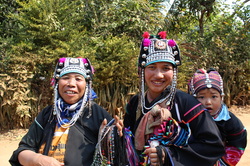 While I was sad to leave my friends behind in Pattani I was incredibly excited for the next stop on my journey - the beautiful city of Chiang Mai. Located in the northern part of Thailand the city is hailed as a cultural center for Thailand with a plethora of restaurants (Thai and foreign), glittering Buddhist temples on each block, extensive night markets, local elephant training camps and settlements of hillside tribes. Northern Thailand was exactly what one might expect of the country - sunny blue skies with lovely 80 degree weather, saffron robed monks walking along the streets and extravagant temples nearly everywhere. What I hadn't expected was the images of Ganesha (a Hindu god) I found throughout the city - whether outside of Buddhist temples positioned next to a statue of a Buddha or on a poster hanging on the wall of a business. My last morning in Chiang Mai I made my way to the small Hindu temple in the city where I spoke briefly with the Indian priest who told me that many of the regular devotees were in fact Thais themselves. The Karyan, Akha and Others In addition to exploring temples I also took a day trip outside of town to meet some of the ethnic hilltribes including women of the well-known Karyan long neck tribe. Though the trip itself was a bit superficial at times with the guide herding us out of and into the van for brief encounters with people from the different ethnic groups, some of whom pressured us heavily to buy their goods, it did give me brief opportunities to speak with, albeit limited by language differences, some of the women. Those short chats were one of the highlights of my overall trip. 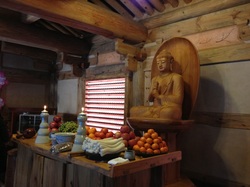 Last Friday the teachers gathered together for a dinner to celebrate the acceptance of a student into Seoul National University (the equivalence of an ivy league school here in Korea). Afterwards, Ms. Oh gave me a ride back to Jeomchon and invited me to go somewhere with her on Sunday though due to a language barrier I was unsure exactly where. However, I agreed since I thought it would probably be interesting experience since Ms. Oh herself is an intriguing woman. She is a self-described "jet setter" who has traveled throughout Europe and Asian countries such as Mongolia and Nepal and has done volunteer work in India. Promptly at 10am Ms. Oh picked me up at my apartment and by communicating through a smattering of English, a bit of Korean and the translation app on her smart phone she explained we were first stopping at her husband's parents' home before going to a Buddhist temple for the winter solstice. The stop at her relative's house was a quick stop during which she dropped off a few goods before we continued onto the temple. The Buddhist temple, situated on a small mountain outside of Mungyeong-eup , consisted of a few basic brown buildings. They lacked the intricate and colorful designs of a typical Korean Buddhist temple and other fairly obvious Buddhist symbology such as swastikas and statues of the Buddha. After arriving we entered one of the buildings in which there was a basic wooden Buddha (pictured above). In front of the Buddha on an altar were plates of offerings - oranges, tomatoes, pomegranates and rice cakes. On either side of the Buddha were thin shelves filled with small lotus shaped lamps that changed colors.
Inside this simple room were a group of 30-40 people, most in their mid-to-late 40's and older who were seated on cushions on the floor facing the Buddha. A clean shaven Buddhist nun sat on a slightly elevated platform in her loose blue garb with a saffron colored clothe wrapped around her. She was chanting Buddhist sutras of which some of the parishioners joined her. For the next hour or so we listened to the chanting and at specific moments went through a bowing ritual which involved standing up with one's hands clasped in front of you, kneeling on the ground and then touching your head to the ground. After the nun completed chanting the sutras we listened to a short discourse on dharma in the upcoming year before they thanked members of the temple board and announced the new members for the upcoming year. Following this ceremony we went down to a clearing between a few small building in which food was being offered to the visitors. Ms. Oh explained that the red bean and rice porridge with which people filled their bowls was a traditional food for this festival. Other dishes included kimchi made at the temple (and therefore vegan), deuk (rice cake) and a small pancake type food filled with some sort of sweetened bean paste. We spent another hour or so at the temple walking around the temple grounds, warming up in one of the rooms reserved for meditation, briefly chatting with the nun who gave me and other visitors a bracelet and enjoying a cup of pine tree tea before heading back to Jeomchon. The end of September was a busy time for me - I changed schools, tried to help my replacement at MTHS get settled in Jeomchon and took a trip to Taiwan over Chuseok. An annual holiday, Chuseok is commonly referred to as "Korean Thanksgiving" by the people with whom I speak. Most people return to their hometowns for the holiday and enjoy large meals together before cleaning their ancestral graves. Since most restaurants and stores close down for Chuseok it can be a bit dull so I jumped at the chance to travel outside of Korea. Since I only have 5 days I decided to go to Taiwan which is just a short 2 hour flight away from Seoul. I spent my short vacation exploring Taroko Gorge, a beautiful area near the town of Hualien and the city of Taipei. Since pictures can express much more than words I'll invite you to look at my pictures below. 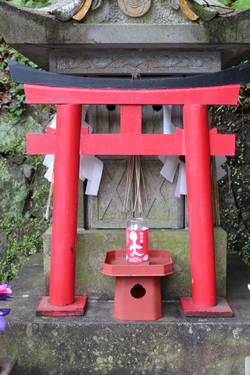 Shinto (神道), the way of the kami, is an indigenous religion in Japan. Followers worship kami, a word which can be translated as a god, spirit or essence. Some kami such as Amaterasu from whom the Japanese imperial line are descended are in human form. However, other kami are more animistic in nature and can be found in rivers, mountains and even rocks. The actual number of Shinto practitioners is difficult to count since it is not necessary to be a recognized adherent to worship at a Shinto Shrine. Many Japanese will visit a shrine throughout the year with the largest attendance being on New Year's day. However, an important examination, an upcoming job interview or the desire for an amulet are other reasons which might draw a visitor into a shrine. Since I am interested in culture and religion, specifically localized religious practices I decided to visit as many Shinto shrines as possible during my most recent travels to Japan. I managed to visit at least 25 shrines in just 9 days and partake in the most basic of Shinto rituals - praying to the kami. Click "Read More" below to view a few of my favorite shrines from this trip.
|
| Mindy in the City |
|
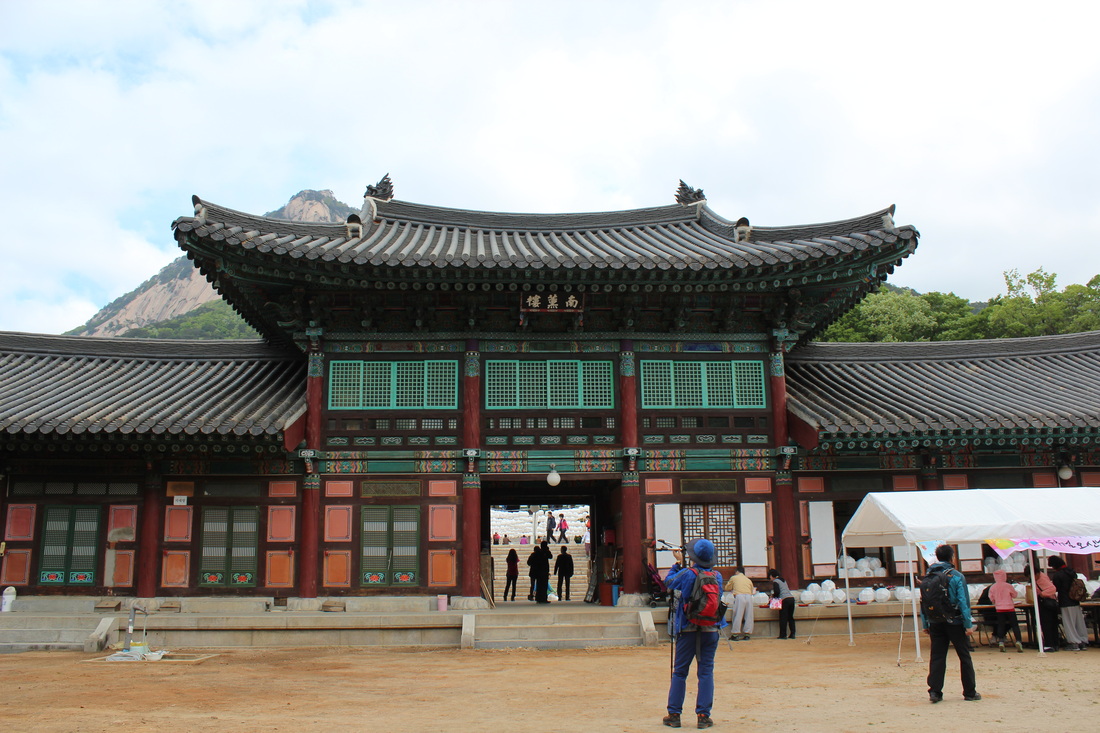
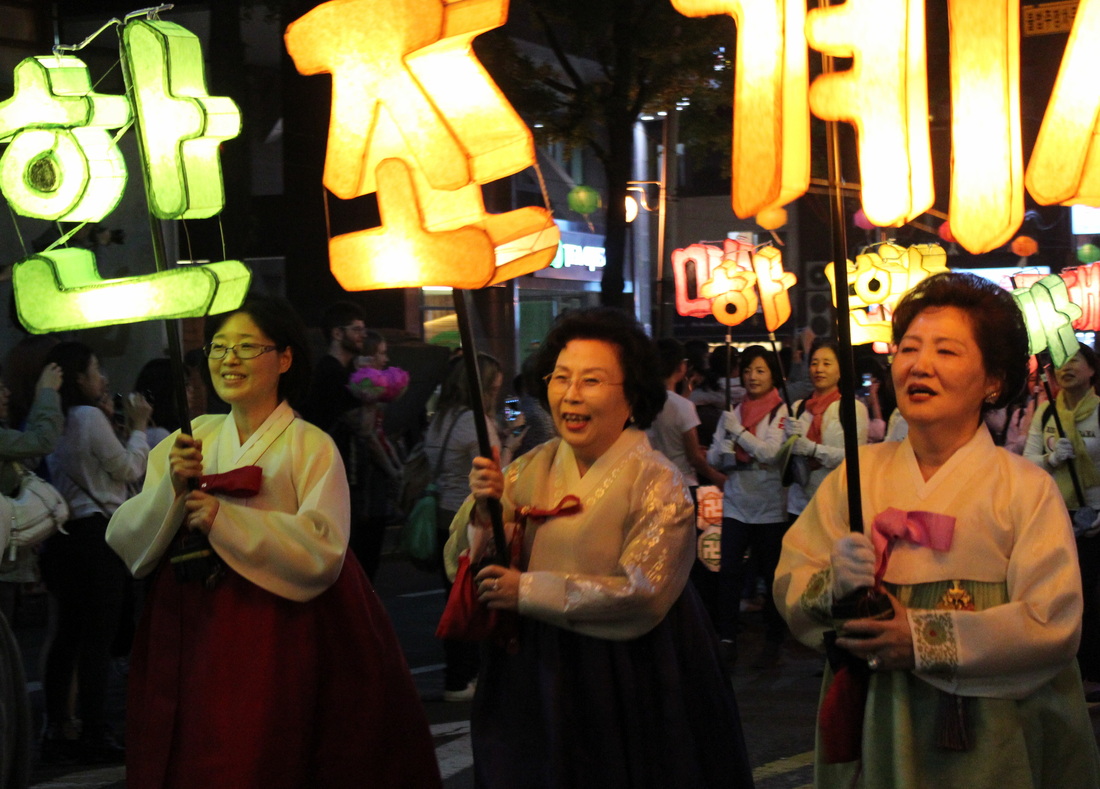



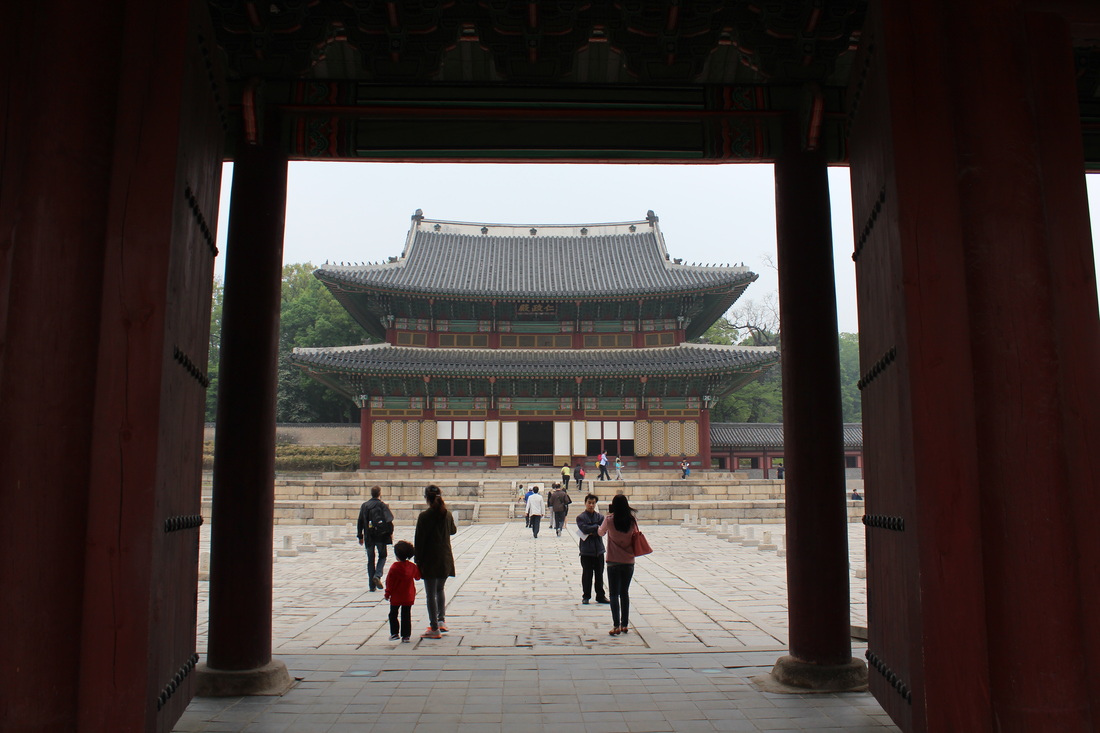




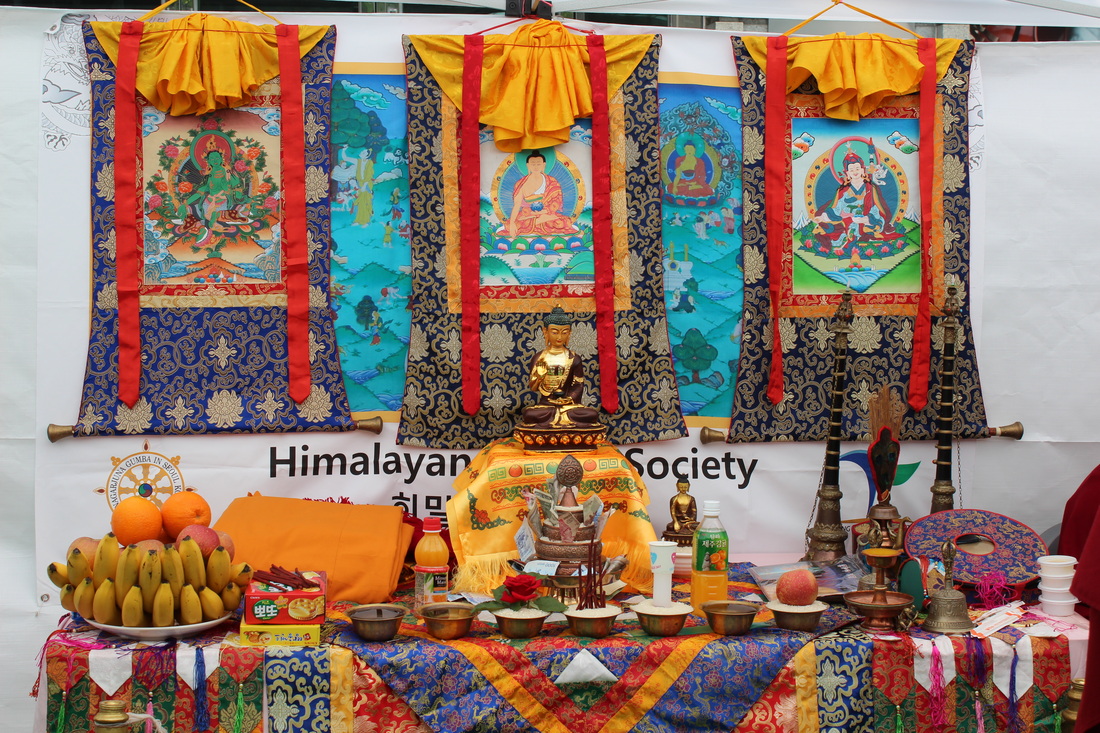
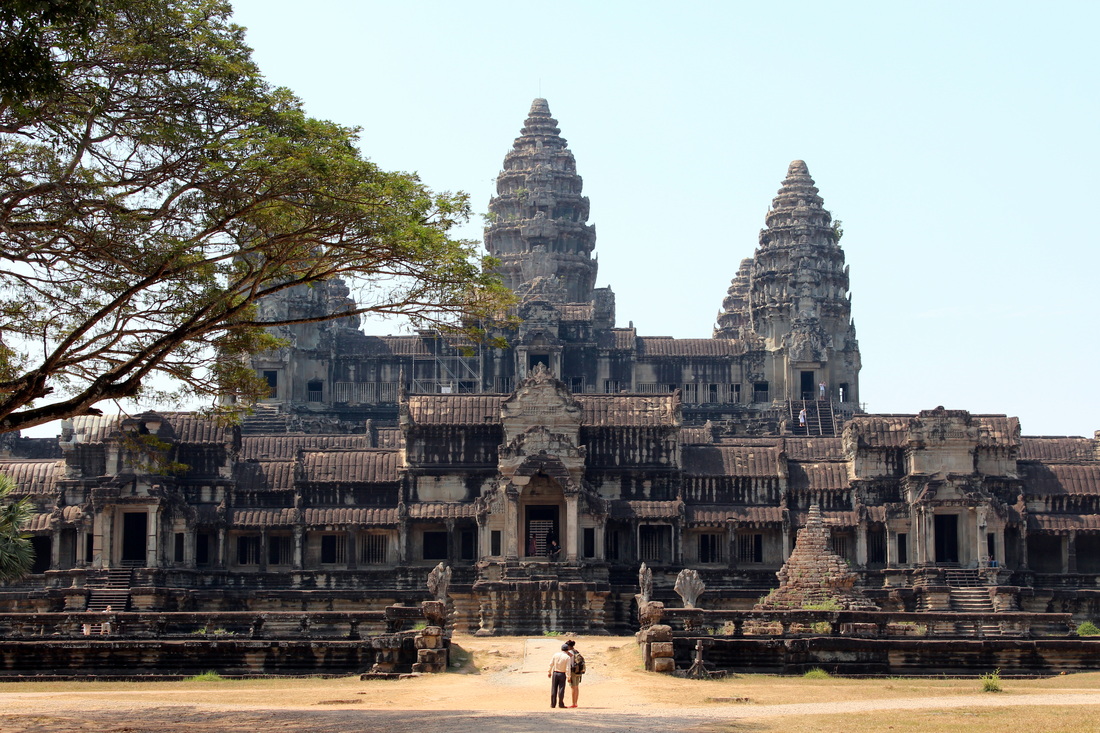



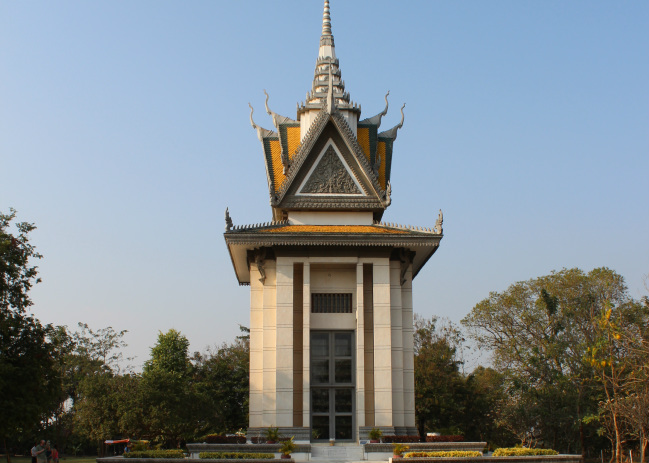













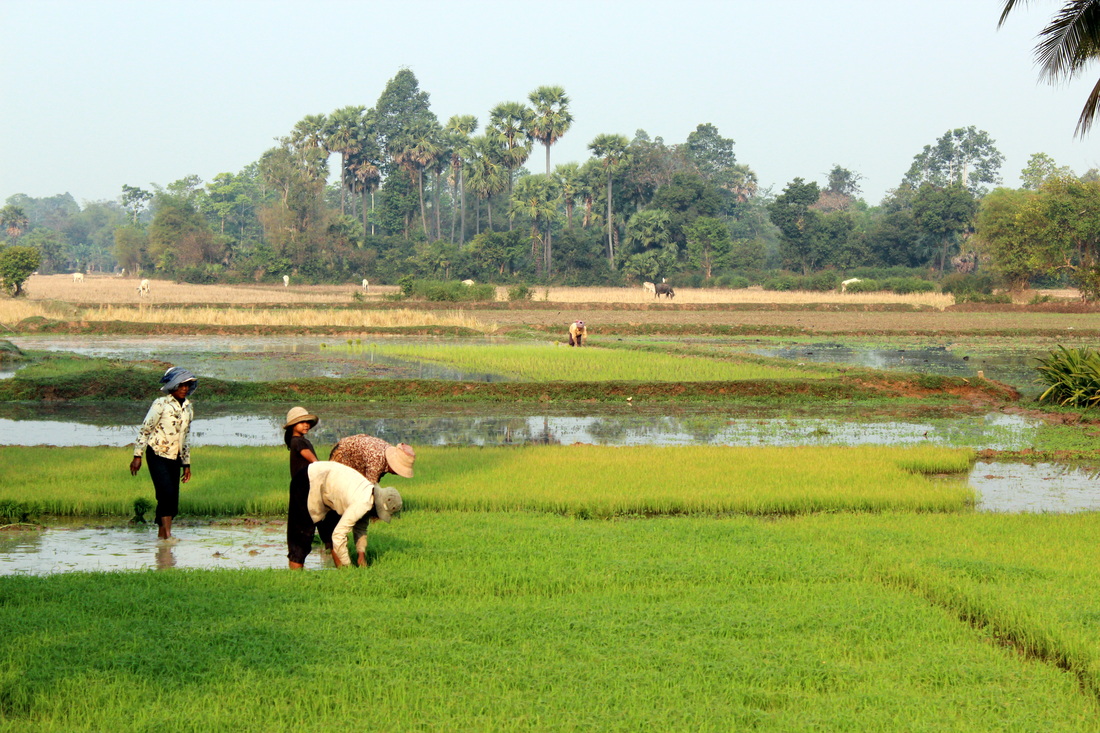












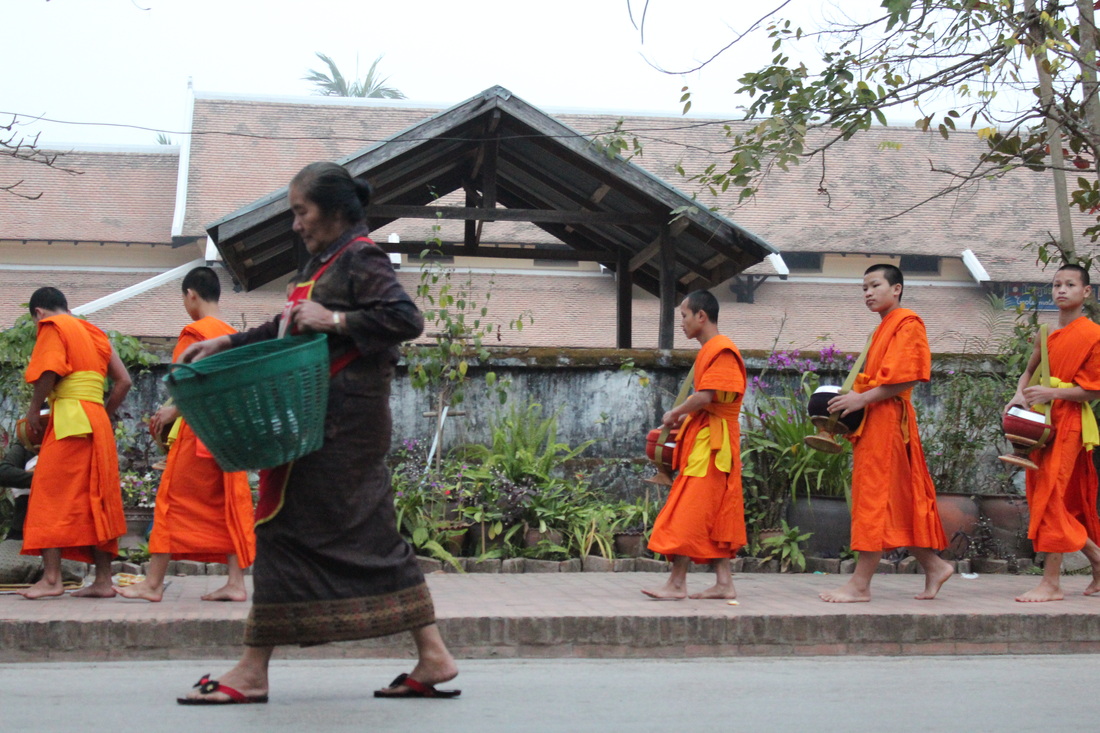






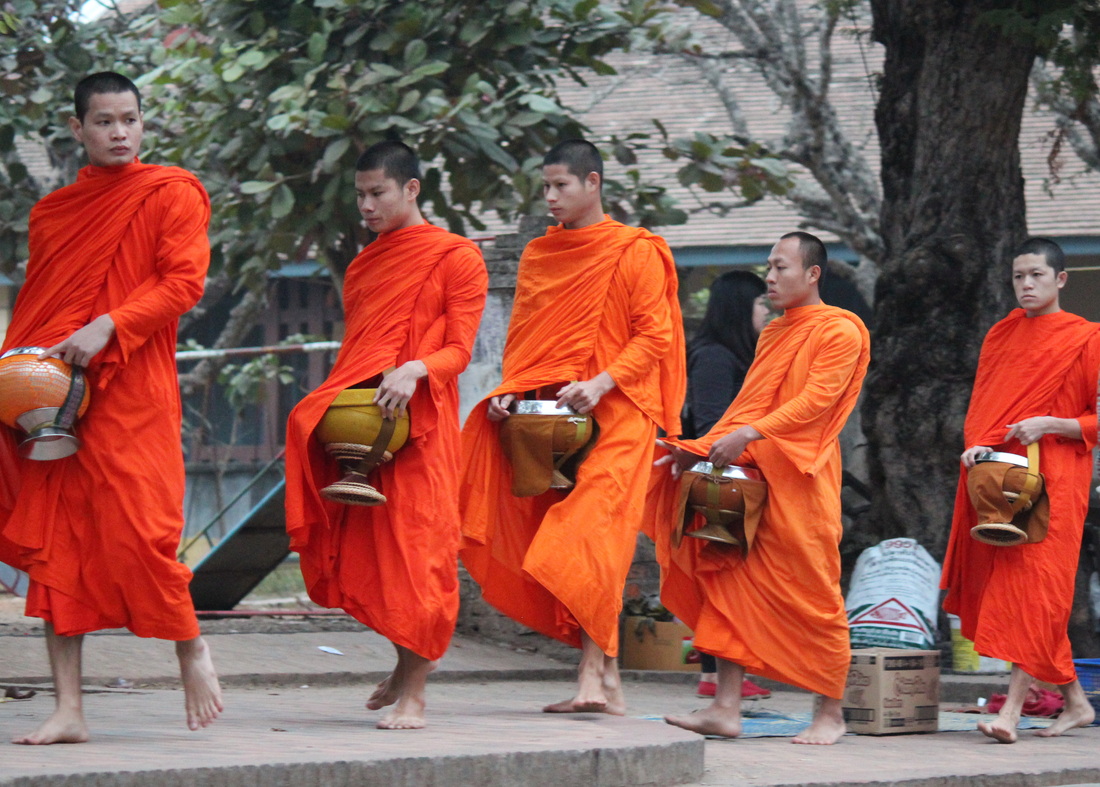













































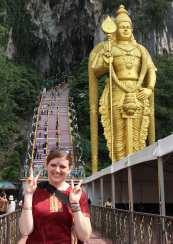
 RSS Feed
RSS Feed